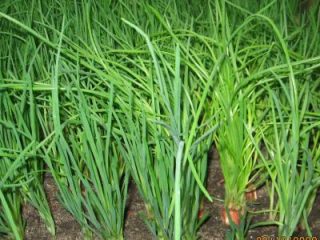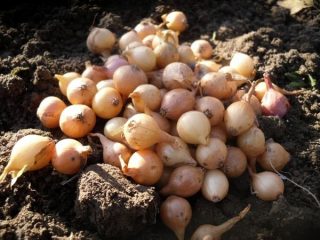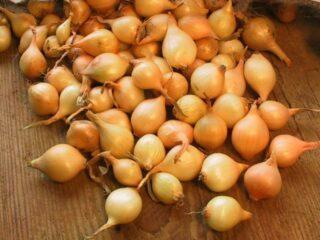Content
Onion Bonus has long been popular among gardeners. The value of the variety is large-fruited, high commercial quality. With proper planting and care, you can harvest crops not only for personal purposes, but also for further sale for sale.
Description and characteristics of Bonus onions
The hybrid appeared thanks to breeders from Japan. Takii Seeds have been able to create a vegetable crop with improved characteristics, and as a result, Bonus onions have become widespread. In Central and Eastern Europe, the hybrid is the leader in sales.
Appearance
Outwardly, the bulb does not differ from most varieties. It is round in shape, weighing 70-85 g. Above, the scales of the Bonus bow are brownish-golden, shiny. The lower layers are white, with a greenish color, juicy. In total, there are 3-4 dry scales in the onion, the rest is edible pulp.
Bow neck Bonus medium thickness, multi-pronged head. The height of an adult plant is average, the leaves are vertical, dark green. The root system is fibrous type.
Ripening period and yield
The interval from full shoots to lodging of leaf plates is 75-90 days. Onion Bonus refers to early ripening annuals. The crop is intended for spring sowing.
The yield of the hybrid is high. Bonus is high: up to 800 thousand bulbs can be harvested from 1 hectare. The size of each of them will be 80-90 mm with proper care. If the planting density is 1 million specimens per hectare, then the diameter of the head will reach 60-70 mm.
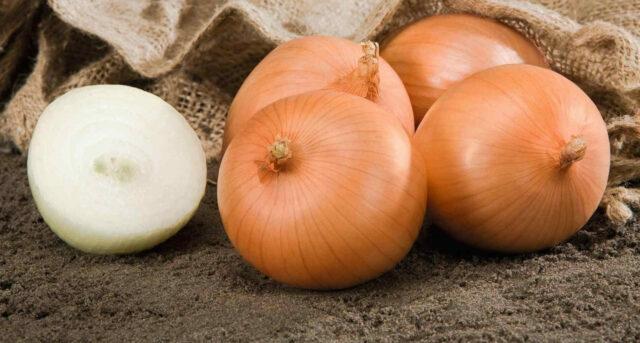
The ripening rate of the hybrid before the start of harvesting is 90%, but after ripening it reaches 98%.
Disease and pest resistance
None of the varieties have absolute immunity to microorganisms. Bonus onion hybrid is resistant to diseases and pests if the plant is properly cared for. It is recommended not to neglect preventive measures.
Composition and properties
Bonus onions can be grown not only for the heads, but also for the feather. Both parts of the plant have a number of beneficial properties.
The hybrid contains a small amount of starch, ash with disaccharides. But there are much more nutrients in onions:
- vitamin H, E, PP;
- vitamin C;
- thiamine;
- riboflavin;
- pyridoxine;
- folic and pantothenic acid.
In addition to vitamins, onion Bonus also contains minerals: nickel, aluminum and fluorine. Contained in the pulp and such useful substances as boron, fluorine, copper, iodine, zinc. Available in onions and iodine, iron, potassium.
This composition explains the amazing properties of the root vegetable:
- bactericidal and antiseptic effect;
- the fight against viruses;
- improved digestion and increased immunity.
In pharmacology and folk medicine, there are preparations and infusions based on onions, aimed at the treatment of atherosclerosis, decreased sexual activity. The root vegetable is also known as an antihelminthic agent. Fresh vegetable juice with honey is a well-known cure for bronchitis and fungal skin diseases.
Application
Onion Bonus can be eaten raw, and can also be added to various dishes during cooking. The vegetable is suitable for frying, stewing and sautéing.
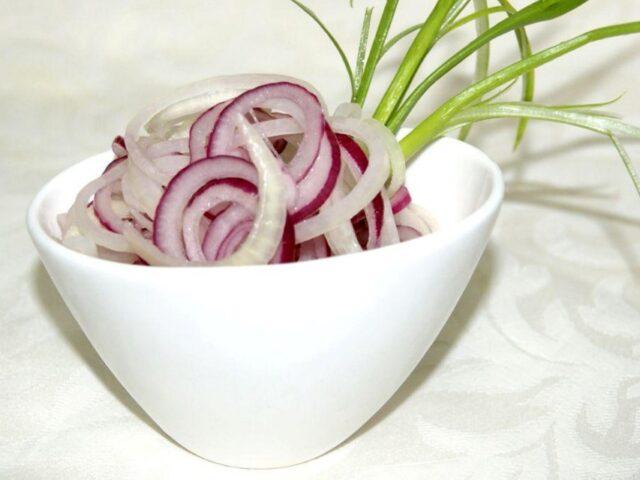
To improve taste and preserve nutrients, you can marinate semi-sharp varieties along with sweet ones.
Growing regions
Onion Bonus was added to the State Register for the North Caucasus region. It is in this area that the maximum yield indicators can be achieved. It should be borne in mind that, provided the necessary conditions are provided, Bonus onions are grown in other regions as well.
Advantages and disadvantages
Among the advantages of a hybrid are the following:
- high germination of the material;
- the ability to adjust the size of the heads by controlling the density of crops;
- long shelf life of the crop;
- semi-sharp taste.

There were no drawbacks in the culture: it is often grown for industrial purposes due to its characteristics
When to plant onions Bonus
The hybrid is resistant to temperature extremes, so all work can be scheduled for April-March, if the plan is to grow seedlings. The seedling method requires more time, so gardeners begin all manipulations with Bonus onions in February-March.
Methods of planting onions Bonus
The choice of method is at the discretion of the gardener. You can get crops through seedlings. Most owners prefer to grow the crop by placing the seed in the soil.
Growing onions Bonus through seedlings
This method has the advantage that the crop will have a longer shelf life.
It is recommended to sow Bonus onions in late February or early March. Before the procedure, it is necessary to prepare the soil. Purchase land from a store or mix turf, humus and sand in a 2: 2: 1 ratio.
Immerse the seeds in a manganese solution. All damaged copies must be discarded. After processing, dry the Bonus onion seeds.
Algorithm of actions:
- Fill the container with soil, moisten the soil and make grooves in it. The distance between them should be 5-7 cm.
- Spread the Bonus onion seeds to a depth of 1.5-2 cm, cover with sand on top and spill with water.
- Cover the container with foil, transfer to a warm room. The optimum air temperature is + 18-25 ° С.
- After the emergence of shoots, the shelter must be removed, provide the onion with sufficient lighting and watering.
50-60 days after sowing, seedlings of the Bonus hybrid can be transferred to the ground. The weather should be dry and warm. Before work, you need to leave only the most developed copies of the Bonus hybrid, which have released 3-4 real sheets.
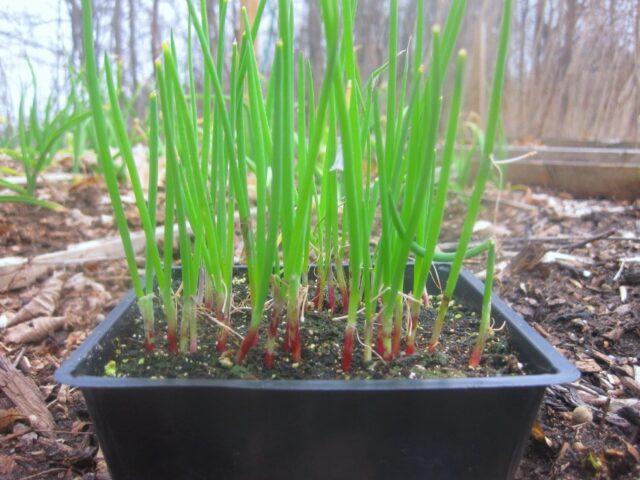
Underdeveloped or damaged seedlings of the hybrid Bonus must be disposed of, even if it survives, the bulb will be small
Planting sevka in spring
For most gardeners, this method is the simplest and most affordable. The work should start by choosing a location. The garden bed should be well lit, protected from winds and heavy rainfall.
Sevok is best purchased from a trusted manufacturer. Planting rotten or damaged bulbs is not allowed. Before the procedure, they should be treated: soak in Fitosporin solution for three hours, then drain the liquid, and roll the seed in wood ash. At the end of the preparation, you must immediately transfer the material to open ground.
The bulb should be placed in the ground at a depth that is twice its size. Then sprinkle the material with earth and spill liberally. It is recommended to cover the bed with a non-woven material. This will not only save plantings from sudden frosts, but also from onion flies.
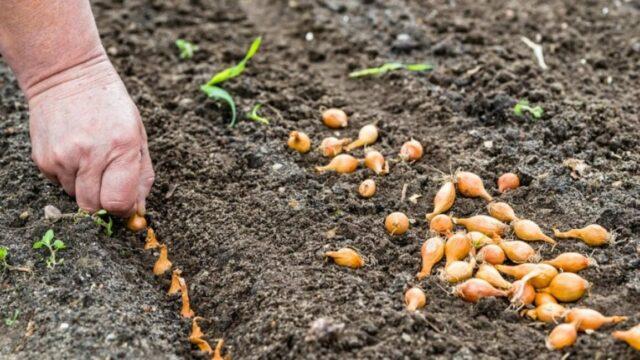
The distance between the heads of the Bonus in the garden should be at least 5 cm, and the distance between the furrows 10 cm
Onion Care Bonus
The plant needs watering, feeding and protection from pests. Moisten the soil as needed.Do not over-water the garden, otherwise the Bonus bow may rot.
During the entire growing season, the hybrid needs two feedings. The first is held in mid-May, and the second in the second week of June.
Organic compounds should be used as fertilizer. It is recommended to feed the Bonus onions for the second time with phosphorus-potassium mixtures.
Disease and pest control
The most common enemies of the Bonus hybrid are onion fly and downy mildew.
The pest safely lays the larvae in the plant, which in the future eat up the crop. If you do not take any measures, then the insect will destroy the plant in the next season.
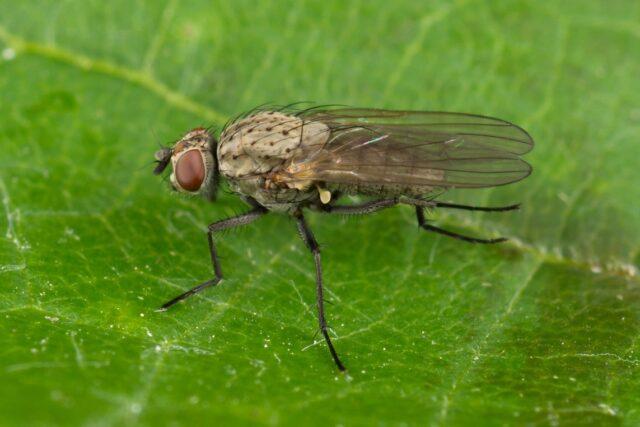
To get rid of an onion fly, it is enough to use the drug Aktara or Mukhoed
In wet weather and low temperatures, there is a high risk of downy mildew. It covers the Bonus onion leaves with a soft greyish bloom. Subsequently, the feathers turn yellow and fall off.
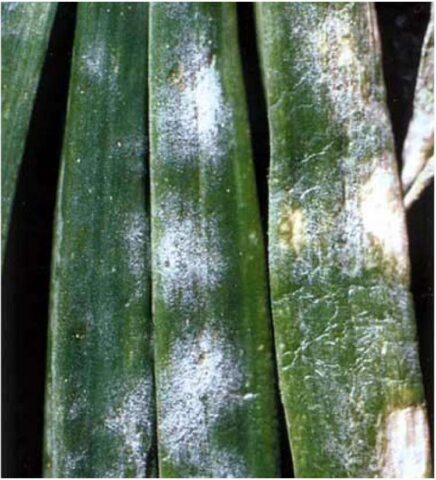
For downy mildew, 1% solution of Bordeaux liquid or Fitosporin-M is effective
Conclusion
Onion Bonus is an early maturing, high-yielding hybrid of Japanese breeders. The plant does not require special care, has sufficient keeping quality and good commercial qualities. The harvested bulbs can be used for various purposes: the pulp is suitable both for fresh consumption and for heat treatment.
Reviews of gardeners about onions Bonus

